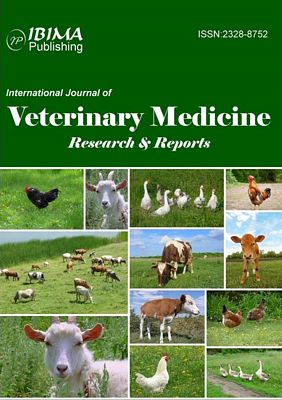Introduction
The urethra in male ruminants is a long tube extends from the bladder to the glans penis. It passes caudad on the floor of the pelvis, turns around the ischialarch, forming a sharp bend and passes craniad as a part of the penis, enclosed in the corpus cavernosum urethrae. Just caudal to the scrotum the penis and penile urethra form a s-shaped curve, the sigmoid flexure. In rams, the penile urethra lies in a groove on the ventral surface of the corpus cavernosum. Its terminal part projects commonly about 3-4cm beyond the glans penis forming a twisted processus urethrae (Budras et al., 2011, Ashdown and Done, 2010, Clayton and Flood, 1996).
Many affections of the penile urethra were mentioned in the available literature including congenital anomalies such as hypospadias in cattle, sheep, and goat(Azari et al., 2010, Sakhaee and Azari, 2009, Ladds, 1993, Smith, 2009, Blowey and Weaver, 2011), urethral dilatation in calves and goats (Gasthuys et al., 1996, Sndak et al., 2010, Kamiloglu et al., 2003, Ozturk et al., 2002, Geccelep and Alkan, 2000, Karras et al., 1992) and acquired affections such as urethral obstruction and rupture in buffaloes, cattle and sheep (Blowey and Weaver, 2011, Dabas, 2009, Misk and Semieka, 2003, Zabady, 1996, Van Metra et al., 1996, Tyagi and Singh, 1996, Gasthuys et al., 1993, Ismail et al., 2007).
The aim of the present study was to report different affections of the penile urethra in ruminants with special reference to diagnosis and outcome of surgical treatment.
Materials and Methods
The present study was carried out on a total number of 403 male ruminants suffering from different affections of the penile urethra [table 1]. The majority of cases were examined during the periodical visits to the village ofveterinary clinics and some cases were recorded at the Veterinary Teaching Hospital of the Faculty of Veterinary Medicine, Assiut University between the periods from 1999 – 2012.
All operations were performed under effect of local infiltration analgesia using Lidocaine HCL 2%. Tranquilization withXylazine HCL 2% in a dose rate of 0.05/kg was used in cattle and buffaloes.
Initialdiagnosis depends mainly on case history and clinical presentation of animals. Lateral and vetrodorsalradiographyof the caudal abdomen and pelvic region and exploratory puncture were performed for conformation of diagnosis. Proper surgical treatment was carried out.
In urethral dilatation, aurethrostomy was performed at the most caudal part of the swelling. The dilated part of the urethra in front of the induced fistula was resected. In urethral dilatation in bulls, urethrostomy was created at the most upper part of the dilated urethra. The dilated part of the urethra below the induced fistula was resected or obliterated. In hypospadias, the bared mucous membrane of the urethra was covered by suturing the skin edges after their dissection from the underlying tissues. The displaced urethral orifice was widened (Misk, 2008).
Perineal urethrostomy was carried out in cases of urethral obstruction only and the same operation in addition to laparocystorrhaphy were performed in cases of urethral obstruction accompanied by bladder rupture (Misk and Semieka, 2003). In cases of urethral rupture, perineal urethrostomy was performed at the perineal region. In addition, several skin incisions were applied to the infiltrated areas with urine. Urethral obstruction in rams and bucks were treated by amputation of the urethral process.
Table 1: Illustrates Different Affections of the Penile Urethra in Male Ruminants and the Number of Affected Animals

Results
Urethral dilatation is a congenital condition recorded in 45 male ruminants [small ruminant = 34, large ruminant = 11] [Table 1]. In small ruminants, the dilatation occured at the ventral aspect of the urethra cranial to the scrotal sac [15 kids] or along its whole length [19 kids]. In newly born animals failure to urinate and accumulation of the urine in the dilated part of the urethra were evident [Figure 1, 2].

In large ruminants, urethral dilatation in bulls was recorded in 11 bulls [Table 1]. The condition was recorded in newly born animals up to 18 months of age. Dilatation was seen along the whole length of the penile urethra at the perineal region starting just below the ischial arch and extended to the base of the scrotum. Dysuria and dripping of urine were the most common signsin those cases. Contrast radiography using intra-urethral injection of Urografin 76% was diagnostic. [Figure 3].
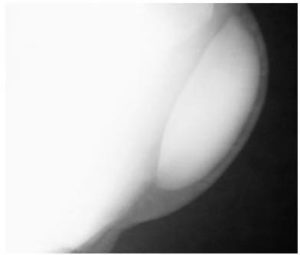
Figure 3: Contrast Radiography of the Dilated Urethra in a Calf
Treatment was conducted in small ruminants by establishment of urethrostomy at the most caudal part of the dilatation with urethrectomy of the dilatation. Recovery occured in 31 cases out of 34. Wound dehiscence occurred in three cases and re-establishment of the urethral fistulae was performed.
In bulls urethrostomy was conducted at the proximal part of the dilatation distal to the ischial arch. The dilated part distal to the induced fistula was excised in 4 cases and obliterated in 7 cases. Recovery was uneventful except in one case in which wound dehiscence was resulted and was corrected in routine manner.
Hypospadia is a congenital defect characterized by presence of a urethral fissure at the ventral aspect of penile urethra. Urethral fissure was seen along the whole length of the penile urethral [13 cases] [Figure 4] or along the penile urethra cranial to the scrotum [4 cases] [Figure 5]. The urethral orifice was displaced caudad to the level of the scrotum or to the level of the anal opening. The bared mucous membrane of the penile urethra was subjected to a variable degree of trauma.
In large ruminants, urethral dilatation in bulls was recorded in 11 bulls [Table 1]. The condition was recorded in newly born animals up to 18 months of age. Dilatation was seen along the whole length of the penile urethra at the perineal region starting just below the ischial arch and extended to the base of the scrotum. Dysuria and dripping of urine were the most common signsin those cases. Contrast radiography using intra-urethral injection of Urografin 76% was diagnostic. [Figure 3].
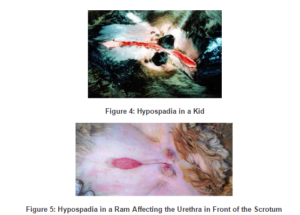
Treatment was conducted under effect of local analgesia using local infiltration of 2% Lidocaine HCL along the edges of urethral fissure. Dissection of the skin edges at both sides of the ventral fissure was performed and then continuous silk sutures were applied along its whole length just to cover the mucous membrane and closed the lumen. The displaced urethral orifice was widened in some cases [5 out of 17] to keep flow of urine intact.
Urethral obstruction was recorded in 320 animals [Table 1]. The location of obstruction with urolith was detected at the distal part of the sigmoid flexure in all cases of bulls and buffalo bulls and at the urethral process in rams and bucks. The age of affected bulls varied between 2-24 months. They were presented at 1-6 days of anuria. Cases of urethral obstruction in rams and bucks were 4-12 months old and presented to the clinic at 1-5 days of anuria.
Cattle and buffalo bulls with urethral obstruction (303 animals) were divided into two groups of animals:
Group 1: Bulls have urethral obstruction only [111 animals].
Group 2: Bulls have urethral obstruction and rupture of urinary bladder [192 animals].
Animals with urethral obstruction only displayed signs of short period of moderate colic including teeth grinding, rear leg stampling and kicks at the abdomen. They assumed repeatedly the posture for urination and the tail may be seen moving up and down with no urination or few droplets resulted from these attempts. On rectal palpation, the bladder was found distended and the pelvic urethra was found pulsating. Urethral calculus could be seen radiographically [Figure 6].
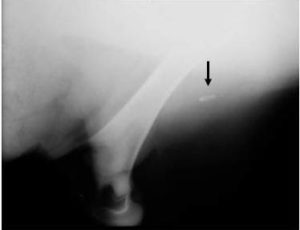
Figure 6: Lateral Radiography of the Perineal Region Showing Urethral Calculus at the Distal Part of Sigmoid Flexure (Black Arrow) in a Calf
Animals with urethral obstruction and ruptured urinary bladder showed signs of abdominal distention without any evidence of colic [Figure 7]. The bladder felt empty on rectal palpation. Abdominal paracentesis revealed copious amount of clear yellowish fluid, which by its odour was mostly identified as urine.
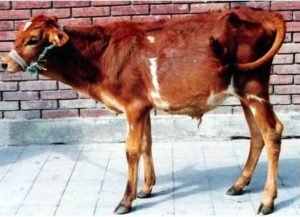
Figure 7: A Calf with Abdominal Distension Due to Rupture of Urinary Bladder
Perineal urethrostomy was performed in cases of urethral obstruction only [Figure 8]. Ninety threeanimals recovered, 7 died during operation and in 11 cases the fate of the animal could not be recorded.
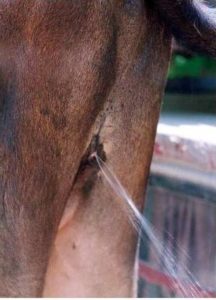
Figure 8: Perineal Urethrostomyone Month after Operation in a Calf
Perineal urethrostomy and cystorrhaphy were performed for treatment of cases of urethral obstruction with rupture of urinary bladder. Recovered cases were 149 while 21 died during surgery and in 22 animals the fate could not be recorded.
Urethral rupture occurred in 15 bulls and 6 buffalo bulls. Animals presented at the day 6-15 of anuria. The site of rupture happened at the site of obstruction at the distal part of the sigmoid flexure. The subcutaneous tissues at the ventral abdominal wall, preputeal, scrotal and perineal regions become infiltrated with urine resulting in frog-belly shaped abdominal contour. A transverse line at the lateral abdominal wall was evident in all animals representing the line of separation between non-infiltrated and infiltrated tissues with urine. Violet discoloration of the skin at the infiltrated areas appeared first then necrosis and sloughing of some areas of skin occurred later on [Figure 9a, b; 10].

Perineal urethrostomywere performed at the healthy area of the perineal region mostly close to the ischial arch. Several skin incisions were performed over the infiltrated areas [Figure 11]. Zinc oxide ointment was applied over the healthy areas surrounding the affected areas and cod-liver oil was applied over the sloughed and necrotic tissues.
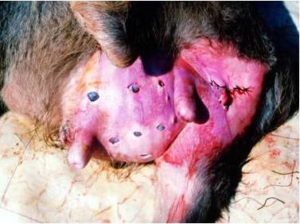
Figure 11: A Calf after Perineal Urethrostomy and Multiple Skin Incisions in a Case of Urethral Rupture
Recovery was detected in 15 cases and in 6 cases the fate of treatment couldnot be recorded.
Discussion
Congenital urethral dilatation in goats was mentioned in the available literature (Sndak et al., 2010, Kamiloglu et al., 2003, Karras et al., 1992). Examination of the affected animals revealed that the skin and urethral wall were intact and dilated together at the ventral aspect of the penis starting at the ischial arch or at the level of the scrotum craniad to a variable distances from the preputeal orifice. Treatment was restricted to a creation of urethral fistula at the caudal part of the swelling (Kamiloglu et al., 2003). Recovery was uneventful and usually resulted in free discharge of urine from the urethral fistula (Sndak et al., 2010, Kamiloglu et al., 2003, Karras et al., 1992).
Urethral dilatation in male calves or buffalo – calves was prescrotal and seen early in life [3-12 months] and appears to have a congenital back ground (Ozturk et al., 2002, Geccelep and Alkan, 2000). The dilatation started just below the ischial arch and extended to the level of the scrotal sacs. The sigmoid flexure of the penis appears to be not included in this process. The flow of urine was not interrupted as in cases of urethral dilatation in kids however the presence of a large swelling at the perineal region is cosmetically non acceptable in addition to the continuous contamination of the perineal region with voided fecal matters. Creation of a urethral fistula, suggested by the authors of this study, appears to be the only acceptable way for treatment of such cases at the moment. Resection or obliteration of the dilated part was performed, however the later was more practical but time consuming (Gasthuys et al., 1996).
Hypospadias, urethral fissure at the ventral aspect of penile urethra, was mentioned in the available literatures (Sakhaee and Azari, 2009, Azari et al., 2010, Sndak et al., 2010). The urethral fissure affects the penile urethra cranial and caudal to the scrotal sac. Some authors classify hypospadia into 4 types; palanetic, penile, scrotal and perineal (Ladds, 1993). A conservative treatment was suggested to protect the mucous membrane of the urethral fissure from trauma by dissection and retraction of the skin edges for obliteration of the ventral defect keeping in consideration the presence of an intact urethral opening.
The predilection site of urethral obstruction and/or rupture is mainly at the level of the distal part of the sigmoid flexure of the penis behind the site of insertion of the retractor penis muscle. The urethra at this level cannot dilate dorsally and laterally due to presence of the corpus cavernosum penis and cannot dilate ventrally due to the presence of the insertion of retractor penis muscle (Misk and Semieka, 2003). Complete obstruction at this level mostly leads to bladder distention and later on to bladder rupture. In rare cases, rupture of the urethra occurs at the level of obstruction before bladder rupture as a result of pressure necrosis supervenes from rough surface of the stones.
References
Ashdown, R. R. & Done, S. (2010). ‘Colour Atlas of Veterinary Anatomy – Volume 1: The Ruminants,’ London, Elsevier Ltd.
Google Scholar
Azari, O., Sakhaee, E. & Emadi, L. (2010). “Permanent Urethrostomy for Treatment of Caprine Hypospadias,” American Journal of Animal and Veterinary Sciences, 5, 100-103.
Publisher – Google Scholar
Blowey, R. W. & Weaver, A. D. (2011). Color Atlas of Diseases and Disorders of Cattle, Elsevier Ltd.
Publisher – Google Scholar
Budras, K.- D., Habel, R. E., Mülling, C. K. W. & Greenough, P. R. (2011). ‘Bovine Anatomy Hannover,’ Germany., Schlüterscheverlagsgesellschaftmbh & Co. Kg.
Clayton, H. M., Flood, P. F., Mandeville, D. & Farrow, C. (1996). Color Atlas of Large Animal Applied Anatomy, Mosby – Wolfe.
Publisher – Google Scholar
Dabas, V. S. (2009). “Urethral Rupture and Permanent Perineal Urethrostomy in a Male Kankrej Calf,” Intas Polivet, 10 258 – 259.
Publisher – Google Scholar
Gasthuys, F., Martens, A. & De Moor, A. (1996). “Surgical Treatment of Urethral Dilatation in Seven Male Cattle,”Veterinary Record, 138, 17-9.
Publisher – Google Scholar
Gasthuys, F., Steenhaut, M., De Moor, A. & Sercu, K. (1993). “Surgical Treatment of Urethral Obstruction due to Urolithiasis in Male Cattle: A Review of 85 Cases,” Veterinary Record, 133, 522-6.
Publisher – Google Scholar
Geccelep, M. & Alkan, I. (2000). ‘Congenital Urethral Dilatation in a Male Montaphon Calf,’ Israel Journal of Veterinary Medicine, 55, 10-12.
Google Scholar
Ismail, Z. B., Al-Rukibat, R. & Al-Zghoul, M. B. (2007). “Renal and Epididymal Infarctions Associated with Chronic Obstructive Urolithiasis in a Suffolk Ram,” American Journal of Animal and Veterinary Sciences, 2, 29-31.
Publisher – Google Scholar
Kamiloglu, A., Atalan, G., Ozturk, S. & Beytut, E. (2003). “Urethral Dilatation and Its Surgical Treatment in a Lamb,”Indian Veterinary Journal, 80, 1171-1172.
Publisher
Karras, S., Modransky, P. & Welker, B. (1992). “Surgical Correction or Urethral Dilatation in an Intersex Goat,” Journal of the American Veterinary Medical Association, 201, 1584-1586.
Publisher – Google Scholar
Ladds, P. W. (1993). “Congenital Abnormalities of the Genitalia of Cattle Sheep, Goats, and Pigs,” The Veterinary Clinics of North America: Food Animal Practice, 9, 127-144.
Publisher – Google Scholar
Misk, N. A. (2008). ‘Atlas of Veterinary Surgery,’ Assiut, Assiut City Press.
Misk, N. A. & Semieka, M. A. (2003). “Clinical Studies on Obstructive Urolithiasis in Male Cattle and Buffaloes,” Assiut Veterinary Medical Journal, 49, 258-274.
Publisher – Google Scholar
Ozturk, S., Klc, E., Aranc, A. & Uygunturk, A. (2002). ‘A Case of Aplasia Penis, Anorchidism and Urethral Dilatation in a Montaphon Calves,’ Kafkas universitesi veteriner fakultesi dergisi, 8, 63-65.
Sakhaee, E. & Azari, O. (2009). “Hypospadias in Goats,” Iranian Journal of Veterinary Research, 10, 298-301.
Publisher – Google Scholar
Smith, B. P. (2009). Large Animal Internal Medicine, Mosby- Elsevier Inc.
Publisher – Google Scholar
Sndak, N., Sahn, T. & Brck, H. S. (2010). “Urethral Dilatation, Ectopic Testis, Hypoplasia Penis, and Phimosis in a Kilis Goat Kid,” Kafkas universitesi veteriner fakultesi dergisi, 16, 147-150.
Publisher – Google Scholar
Tyagi, R. P. S. & Singh, J. (1996). ‘Ruminant Surgery: A Textbook of Surgical Diseases of Cattle, Buffaloes, Camels, Sheep and Goat,’ Cbs Publishers and Distributors.
Van Metra, D. C., House, J. K., Smith, B. P., George, L. W., Angelos, S. M. & Angelos, J. A. (1996). “Obstructive Urolithiasis in Ruminants: Medical Treatment and Urethral Surgery,” The Compendium, 317-327.
Publisher – Google Scholar
Zabady, M. K. (1996). ‘Studies on Urolithiasis in Ruminants.Department of Surgery,’ Anesthesiology & Radiology.Cairo, Cairo University.



